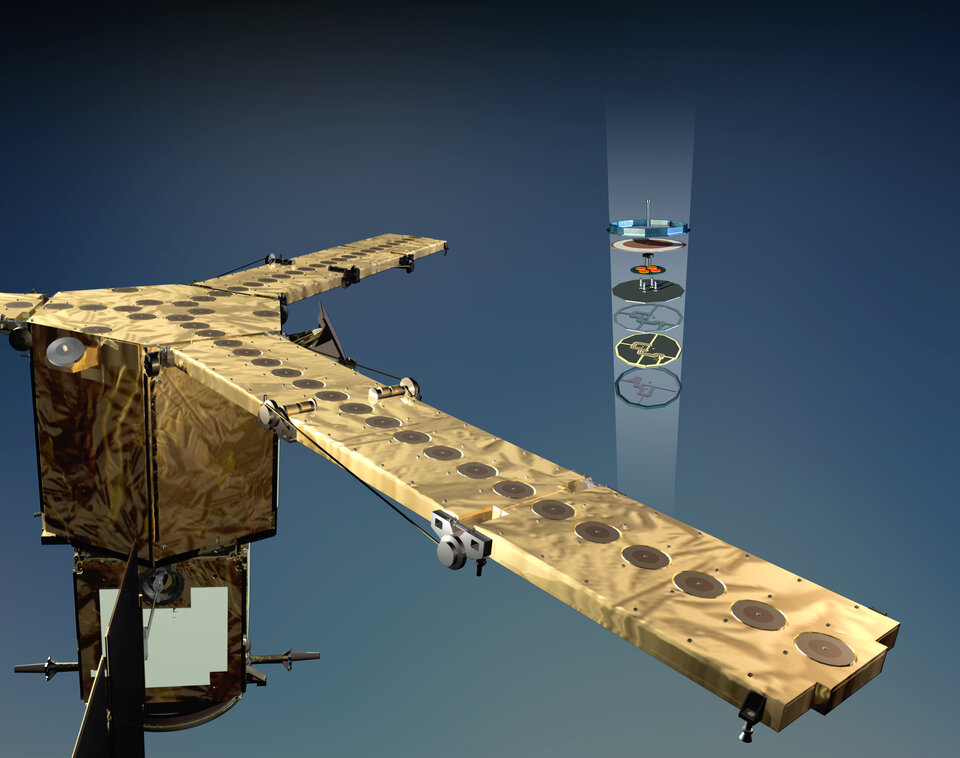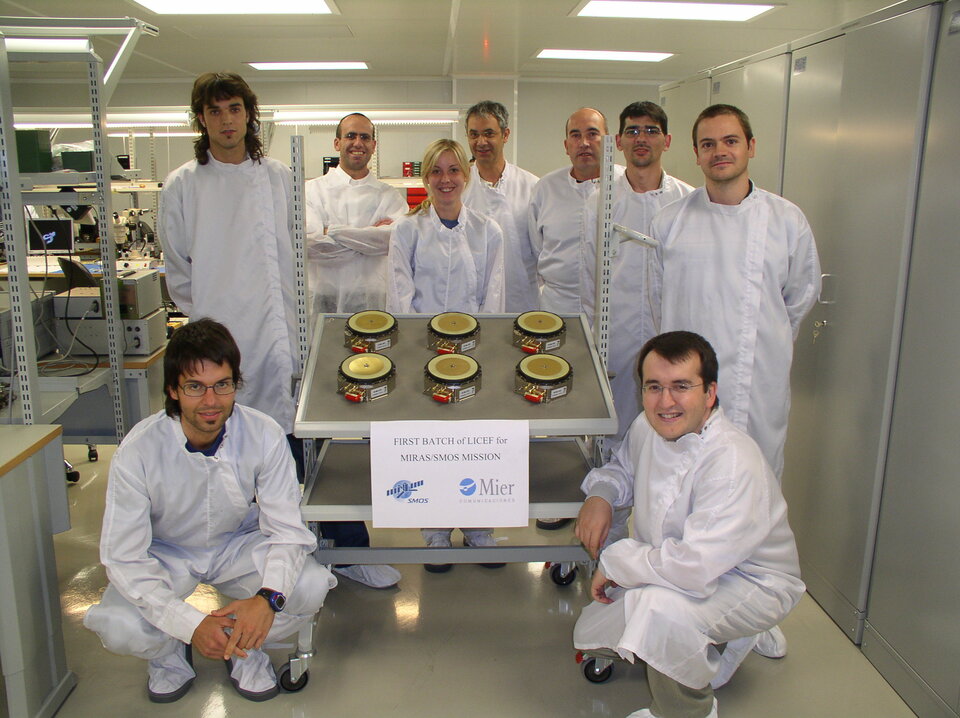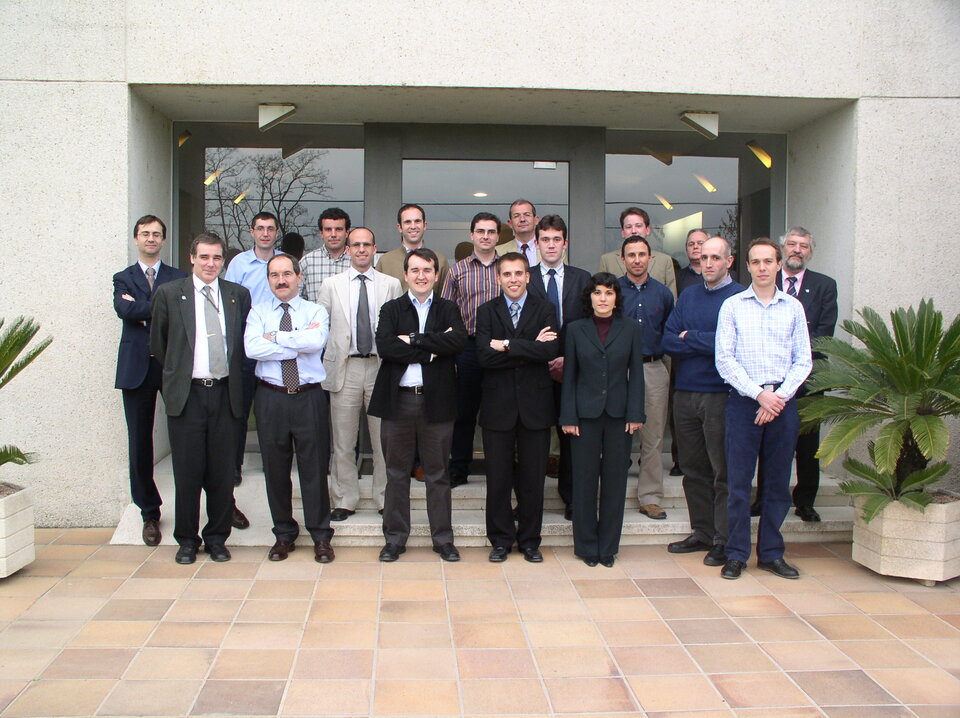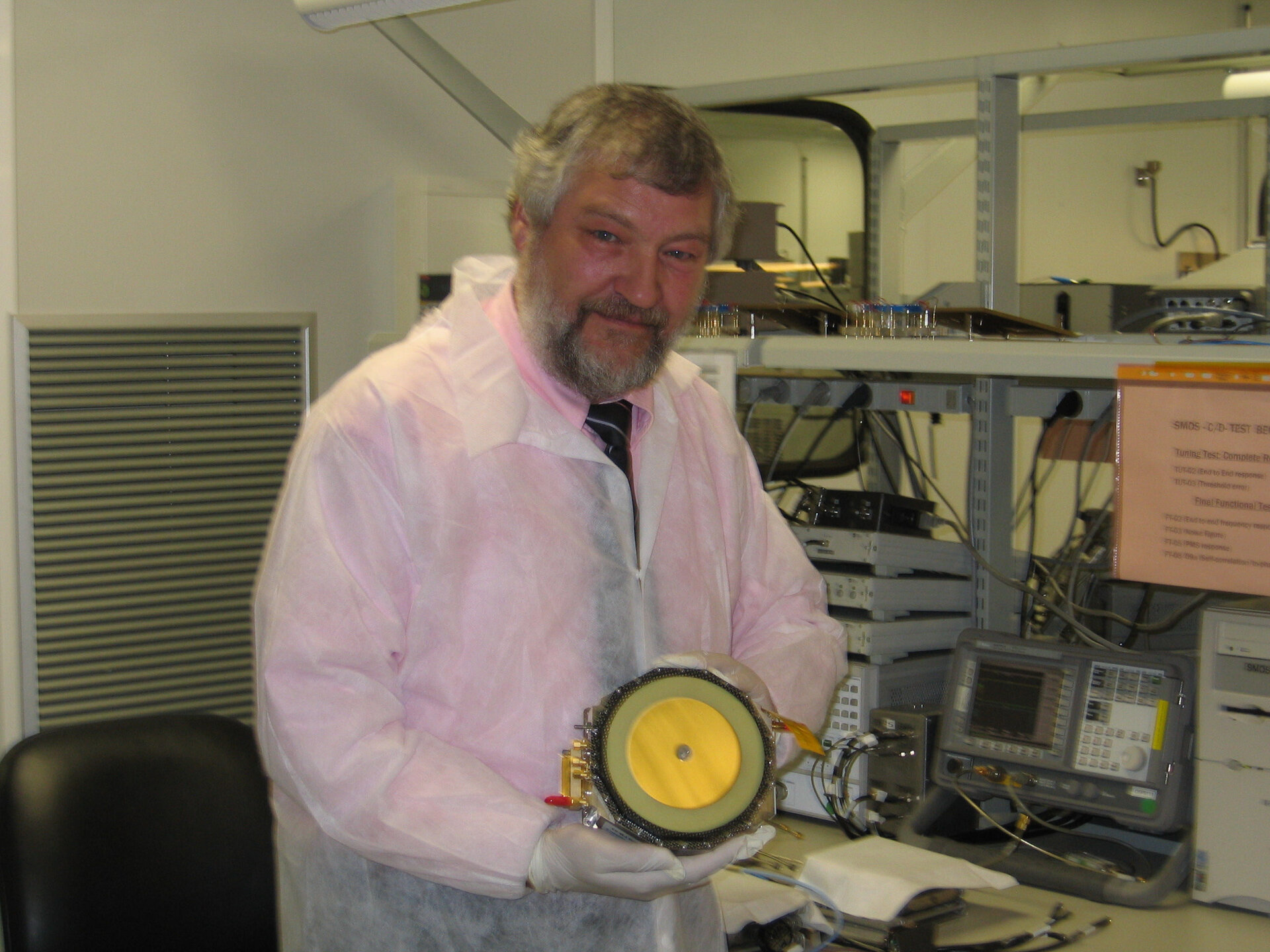Last batch of LICEF receivers delivered for SMOS
Yet another important milestone has recently been achieved for the SMOS mission with the delivery of the last batch of LICEF antenna-receivers.
LICEFs are the integral components of the mission's innovative instrument that will measure microwave radiation emitted from the Earth to derive global maps of moisture in the soil and salt in the surface waters of the oceans in order to further our understanding of the water cycle.
The last six LICEF flight models and three spares were formally presented to ESA at MIER Comunicaciones in Barcelona, Spain during the Delivery Review Board held on 6-7 April 2006. MIER Comunicaciones supplied these units under contract to EADS-CASA Espacio.

EADS-CASA is the Prime Contractor for the MIRAS (Microwave Imaging Radiometer using Aperture Synthesis) instrument that will be carried on the SMOS mission. The delivery also included other components such as a dual-polarised antenna and a highly selective band-pass filter, which were both produced by RYMSA (Radiación y Microondas S.A., Spain).
MIRAS is a completely new type of instrument in that it is a radiometer that operates between 1400 and 1427 MHz (L-band). It consists of a central structure and three deployable arms over which 69 of the antenna-receiver LICEFs are distributed.
LICEFs are very sensitive high-performance units that are designed to comply with tough mass and power consumption constraints. They are the 'eyes' of SMOS, picking up thermal radiation emitted by the Earth at L-band, which is then amplified by 100 dB and 1-bit digitised. A broad range of challenging space technologies have been met in the development of the LICEFs including the development of monolithic and hybrid circuits. MIER subcontracted the production and testing for most of the integrated circuits to OMMIC in France and TESAT in Germany.

In total, MIER supplied one breadboard, four engineering models and 75 flight models of the LICEFs. To produce this large number of units, MIER had to triple the areas of their clean room facility, as well as increase their manufacturing, integration, test and verification resources.
The production ran to schedule and was completed within 11 months, which given the work involved is quite an achievement. Considerable effort was placed on the preparation of all the test benches that meant that a lot of electrical support equipment had to be produced. This part of the workload was sub-contracted to Austrian Aerospace.

"When we started this activity nobody believed they would be able to make it within the constraints of the schedule", claimed ESA's SMOS Project Manager Achim Hahne. "Nevertheless, they did an excellent job – from management down to the man on the assembly line. They were not only in time but also within budget and the product meets all the requirements. An excellent job indeed!"
The technical Delivery Review Board was followed by a ceremony, which was attended by the Spanish General Secretary of Industry Mr Joan Trullen and representatives of the industries involved with the development of the LICEFs. MIER named the LICEFs after the people involved in their production – a reward for their excellent work. By the end of 2007 these component will be in orbit around the Earth contributing to improving our understanding of the Earth's finite water resources and advancing climate, weather and extreme-event prediction.
Thank you MIER!




